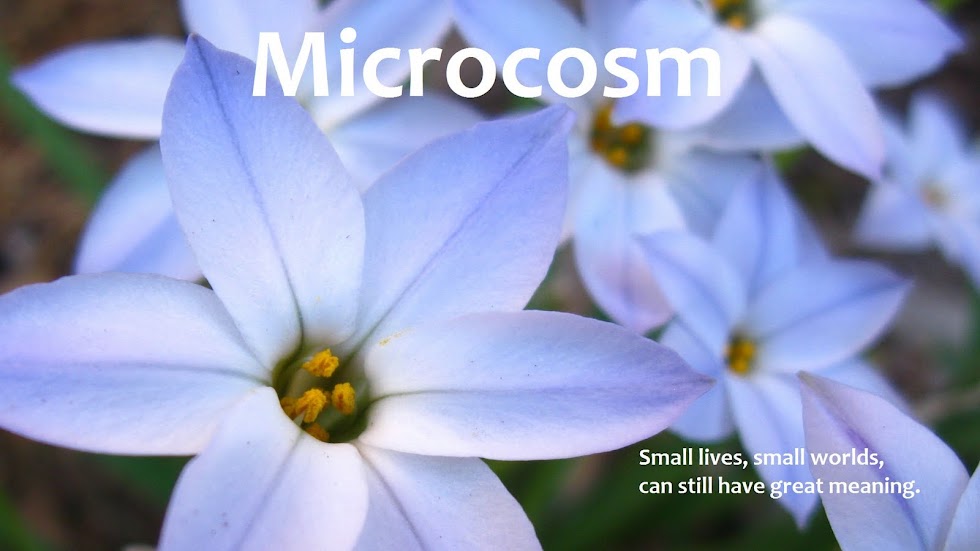If you go back to its roots, a periphery is literally something that is "carried around." Back in the 16th century (or the 14th, depending on your source), the word referred to the atmosphere around the earth. I'd love to know what, in those long-ago days, people really meant by atmosphere. Maybe they had something like the Belt of Venus in mind: the pink glow carried around the horizon at dusk and dawn, at the point where light and dark merge—something visible and radiant with the vast unknown beyond it.
"Periphery" has long since lost that atmospheric shade of meaning, and even its literal one. These days its primary definition is simpler: the outer limit or margin of something. It's a neutral word, describing plain facts. Take the fine hairs on Sempervivum leaves, for example. They grow on the leaves' peripheries, on their margins or outer edges. That is a simple truth, and periphery sums up those little hairs' place in the world without question.
Something beautiful gets lost in the summation, though. Even in the softness of shade, those delicate whiskers carry light around the periphery of the leaves and bring an atmosphere shining to life. The edges are where light gathers and plays. The periphery isn't a neutral place—it's where the magic happens.
Still, better a neutral meaning than a negative one. The other definitions of periphery aren't so pleasant. They're about relative position and status: inside vs. outside; center vs. edge. To be on the periphery is to be marginal, secondary, in a lesser or unimportant position. It's to be like the second of the hens-and-chicks in the photo above—on the edge of your awareness, fuzzed out of focus. Not central to anything, even though you might notice if it weren't there. Just...not mattering all that much.
 |
| Is anything as fascinating as the periphery of a tulip leaf? At least, until the tulips bloom. Then the leaves become...peripheral. |
I've been a little thoughtful about peripheries lately, a little pensive. I've missed some activities that kind of broke my heart not to be a part of—an impromptu cello performance by my oldest nephew, some dear friends' son's bar mitzvah—because, even though I'm doing better than I have in years, I'm not well enough to participate fully. CFIDS/ME really puts you on the periphery of your own life, because being in the thick of things is too disabling. You make it work for you: you find other avenues for life, like blogging and Facebook, and reveling in the small wonders in a small garden. Over time, you kind of forget what "normal" life is like. But then you have a sudden reminder of the everyday pleasures other people enjoy unthinkingly and realize how far out on the periphery you are. You are a bit like Gomer Goldfish:
 |
| Except that I'm never that grumpy. Obviously. |
This really isn't a down-hearted or complaining post: I know full well that being peripheral to activities does not make me peripheral in the hearts of those who love me. There are so many things that I can do. The things I miss out on do not diminish the value (or my enjoyment) of the "less important" things that come my way. And I really like my sofa; you could not find a more comfortable sofa to lie on. For hours on end.
It is, however, a thoughtful post. I've found myself wandering around the garden (in a non-strenuous way) looking at leaf edges, at boundaries and margins and outer limits, and wondering about them. What does it mean to be on the periphery? And if it means something unpleasant, what can I do to change it? I can't change illness (so far). It has set the limits. So instead, what can I do to change the periphery? To make it, not a place that's out of focus or on the edge of awareness, or even a place of neutral fact, but a place where light gathers and plays, a place that carries its own radiance around with it and has, maybe, just a bit of a pink glow?*
 |
| On the periphery between shade and sun. |
How can the periphery be a place where magic happens?
_________________
* Except that I'm not really all that fond of pink.





